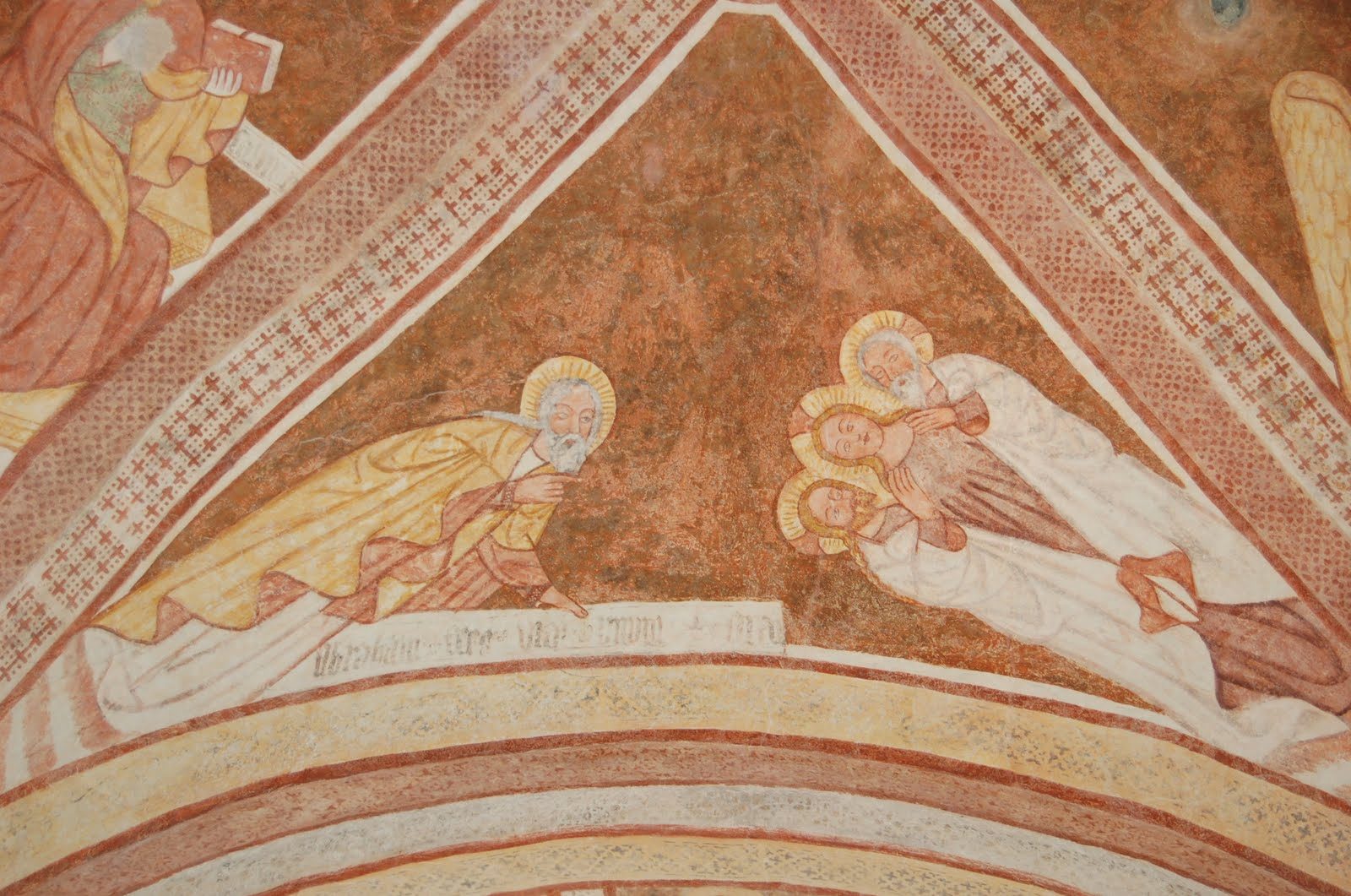“Bridle of untamed colts, Wing of unwandering birds,
Ship’s sure helm, Shepherd of royal lambs…
Christ Jesus, heavenly milk
from the sweet breasts of the bride of grace,
squeezed from your wisdom.
The childlike, with tender mouths,
are cherished, filled with the dewy spirit
of the Word’s breasts, sing together simple praises,
true hymns to Christ the King….”
–“Hymn to the Tutor (Christ)”, 2nd century
Trying to Picture God
Clement of Alexandria, an early church father (c. 150-230 A.D.), often used mother and breast-feeding imagery to talk about God. Above, he uses many word pictures, several of his own making, in this hymn to attempt to describe the Christ he loves so much. Clement compares and contrasts aspects of God whose varying characteristics stand out to us according to our need.
The Bible, too, has blessed us with word pictures for God. However, as Old Testament scholar Tim Bulkeley says, no one picture can stand on its own; they need each other.
John Chrysostom, a fourth century Greek church father, speaks of God as mother at times, here using some Biblical and extra-Biblical (e.g. sister) word pictures together to begin to create an adequate sense of God: “Father, brother, bridegroom, dwelling place, food, raiment, root, foundation…sister, mother.” Bulkeley notes that this list starts with “father” and ends with “mother.” Chrysostom mines the Bible, and his own imagination, for feminine references to God to create the fullest picture of God, even in the fourth century.
God is Not Exactly a Rock
We need many ways to image God to even begin to fathom the ineffable. For example, if God were only Rock, we would misrepresent God’s nature. Is God a thing? Is God hard? Is God unmoved with compassion? No. Rock is inadequate to portray God fully. It tells of God’s power to give refuge and stability–only.
So, we have another word picture, Shepherd. Oh…now we see God clearly. God cares about us like sheep, right? She’ll search for one of us if we are lost, She knows our names, and we know Her voice. But is that all God is? Someone who protects and feeds? No. Shepherd is inadequate to portray God fully, as well. It tells of God’s care for us–only.
As pastor Paul R. Smith writes, “To say ‘Our God is a consuming fire’ (Heb. 12:29) is no more literally true than saying ‘God is our Father.’ Both analogies reveal some authentic truth about God, but both also say some things that are not true.”
God is Not Only a Father
And so, to speak of God as Father only will lead us to an inadequate portrayal of God. It will lead us down the path of idolatry, which the Hebrews were careful to avoid. As Bulkeley says in Not Only a Father, “While idols must be either male or female, neither male nor female alone can portray God.” This is why the Old Testament writers felt free to use mother language for God overlaid on the masculine language. It was Baal who was a male god, not Yahweh.
Yahweh was neither male nor female, surpassing sexuality, and could encompass both sets of (stereotyped) characteristics, similes and metaphors.
Jesus Is Not a Man’s Man (Or, Now, Even a Man)
Likewise, in the New Testament, masculinity is never an essential characteristic of Jesus. His human maleness is a given, but stereotyped masculinity is almost rejected by Jesus in the gospels. He exhibits balanced gender characteristics while he repeatedly confronts sexism and any exclusion of women as equal image-bearers and ministers.
And, we can be sure the second person of the Trinity does not currently possess male genitals. Jesus is Spirit, too.
A More Balanced Way to Picture God
To avoid the implication that God is a male god, and to avoid the idolatry of the male itself, using both masculine and feminine metaphors for God leads us to the fullest picture of God.
That’s why I keep referring to God as “She.” Believers are stuck in our word pictures, unbalanced toward a masculine-only God. The only way to even begin to bring balance is to over-use “She” and “Her” and “Mother” for a while, until those feminine pronouns and metaphors start to feel good and not feel so uncomfortable.
Then we can go back and forth like many of the early church fathers, using either gender according to the need, to picture the God who is both personal and a Spirit, entirely encompassing both genders, but who is without bodily sexuality.
In summary, God is Spirit (John 4:24), but we too often use only one human gender, the male one, to picture God. This is unbalanced and dangerous to a true understanding of God and a complete understanding of the worth of women.
To more fully see God, and not the male god of our own making, we need the feminine word pictures, too.
How are you doing in your journey of expanding word images for God to include the feminine? Is it still difficult and even impossible? Or is it opening up your understanding of God?
My next blog post: tackling the metaphor vs. simile debate.

